Published Ryan Schonert on November 23, 2020
So far, in this blog series we’ve covered the individual tests targeted at specific points of VGA system performance. Part 1 covered wavelength calibration, Part 2 covered system reactivity, and Part 3 covered peak shapes. The last stage to finalize instrument qualification uses test samples that check overall system performance, encompassing several points of system performance simultaneously.
VUV-1 – The Swiss Army Knife of Test Samples
Gasoline is a great matrix for system testing, as it contains a wide variety of compounds which absorb throughout the whole 125-240 nm region. VUV-1 is a mixture of gasoline-range compounds that we’ve carefully developed to evaluate VGA performance. It contains representative compounds from each of the PIONA classes, and we can quickly perform automatic VUV-1 checks using VUV Analyze, as shown in Figures 1 and 2. The automatic VUV-1 check includes built-in pass/fail criteria that simplify the analysis.
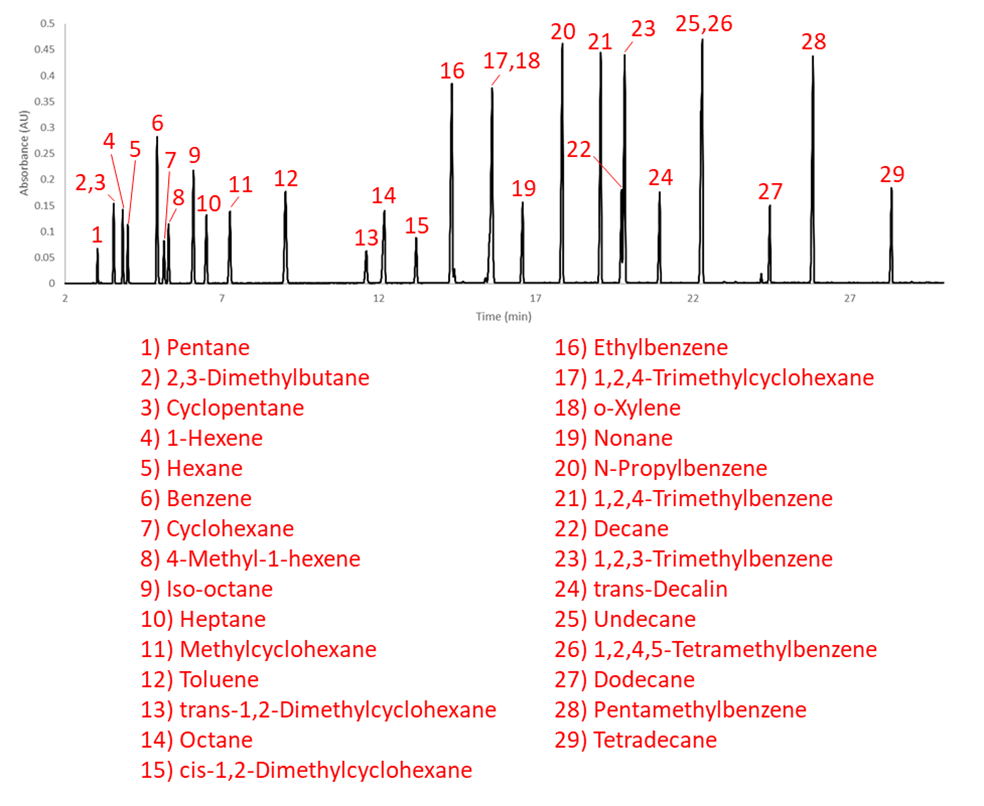
Figure 1. Composition of the VUV-1 system validation mixture. Because it contains representative compounds from each of the PIONA classes, it gives an insight into the system’s performance for a wide variety of sample types.
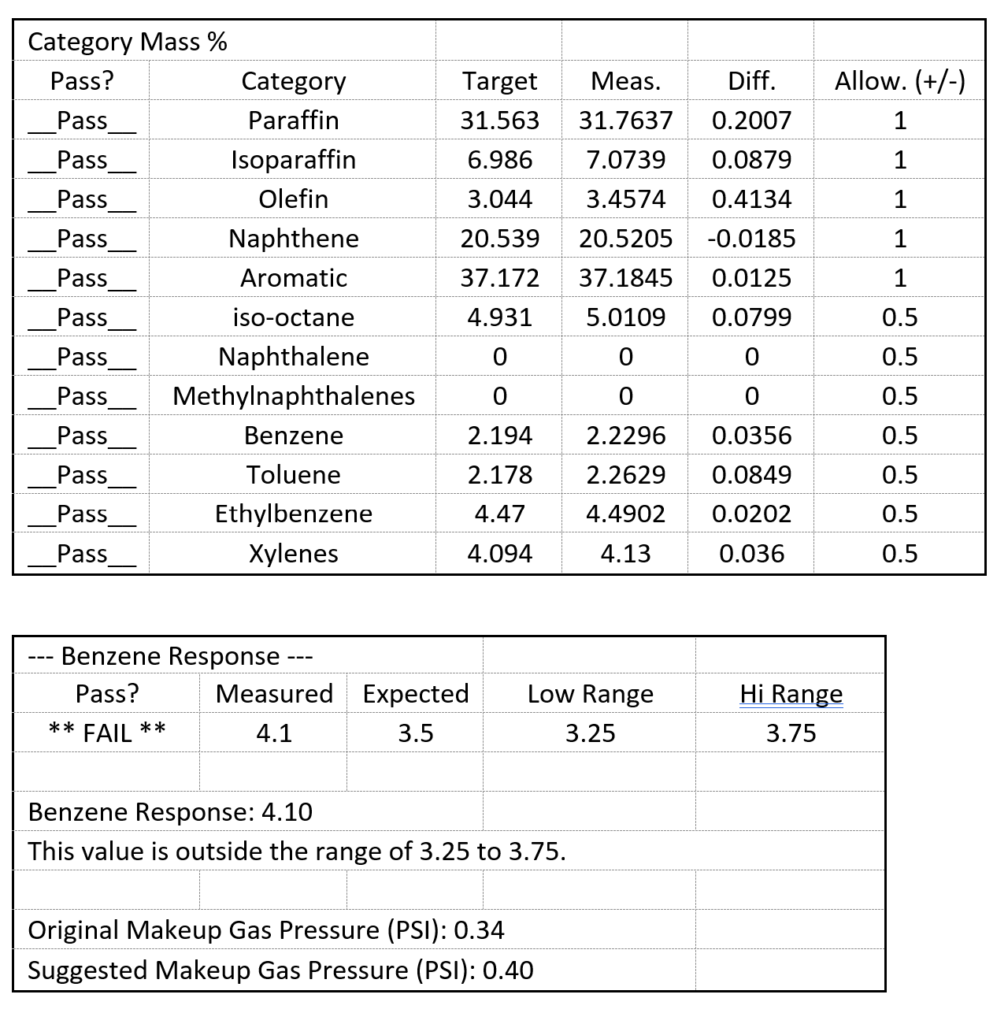
Figure 2. Sample VUV-1 analysis report from the automatic VUV-1 check in VUV Analyze. Because the VUV-1 sample is well-characterized, we can use the expected compositional analysis results to apply pass/fail criteria to the sample. Additionally, the makeup gas pressure can be determined using the spectral response of benzene.
The automatic VUV-1 check also helps us determine the ideal makeup gas pressure for the instrument. If the makeup gas pressure is too high, the sample compounds will be diluted and flow too quickly through the flow cell, generating smaller peaks. However, if the pressure is too low, the increased residence time in the hot flow cell may cause sample reactivity or allow sample deposition onto the inner surface of the flow path. The VUV-1 check measures the spectral response of benzene and compares it to the average expected response at the ideal makeup gas pressure. Then, a new makeup gas pressure can be calculated which should achieve the proper benzene response.
Finally, VUV-1 is used to check the baseline. Although a rise or drop in the baseline may be ignored to some degree, major baseline changes can adversely affect sample analysis. For example, look at the gasoline runs in Figure 3, and pay particular attention to the light green color representing the olefin content of the sample.
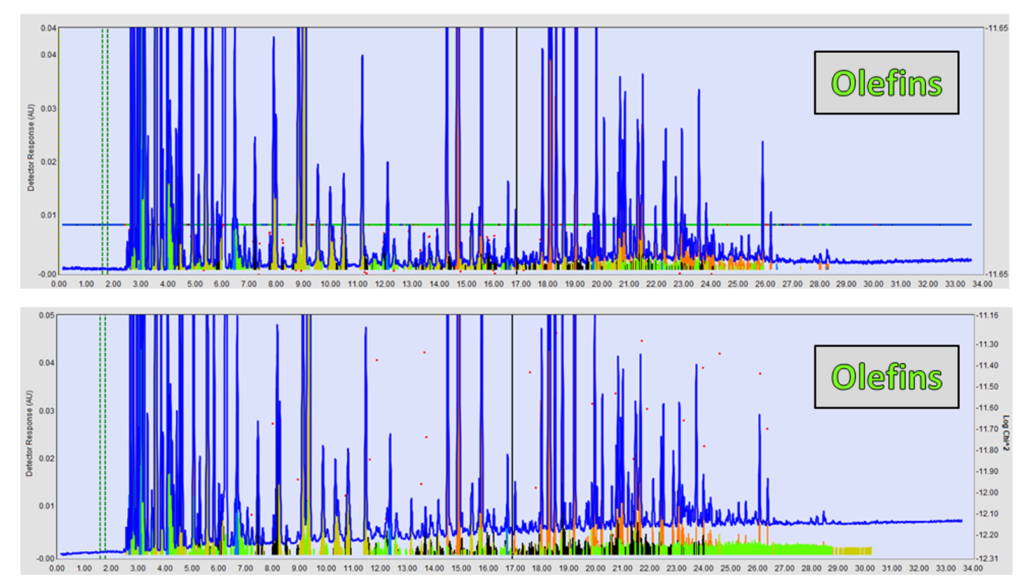
Figure 3. Comparison of a gasoline sample with a stable baseline (top) vs. an unstable baseline (bottom). An unstable baseline can cause several false hits for olefins, especially at the end of the chromatogram where few peaks are eluting. Because of this, we make sure each manufactured instrument delivers a stable baseline.
Unlike the top run in Figure 3, the bottom run shows several false hits, especially in the 25-30 minute region. These hits result from spectral anomalies in the background that cause the baseline to rise, and those spectra are falsely matched as sample compounds. Although changes in VUV Analyze Software’s settings can mitigate these effects, the VUV-1 run is inspected thoroughly to ensure the baseline is stable before shipment.
VUV-CS – The Final System Check Standard
Once all previous tests have passed, the final test can be performed. VUV-CS is a check standard gasoline studied extensively in the ASTM D8071 inter-laboratory study (ILS). Unlike all previous samples, it is a true gasoline, making it far more complex than any standard. However, because this gasoline was characterized extensively in the ILS, we can set pass/fail criteria based on the study’s data. In addition, this check is done automatically like the VUV-1 check. Figures 4 and 5 show sample data and a sample report for VUV-CS.
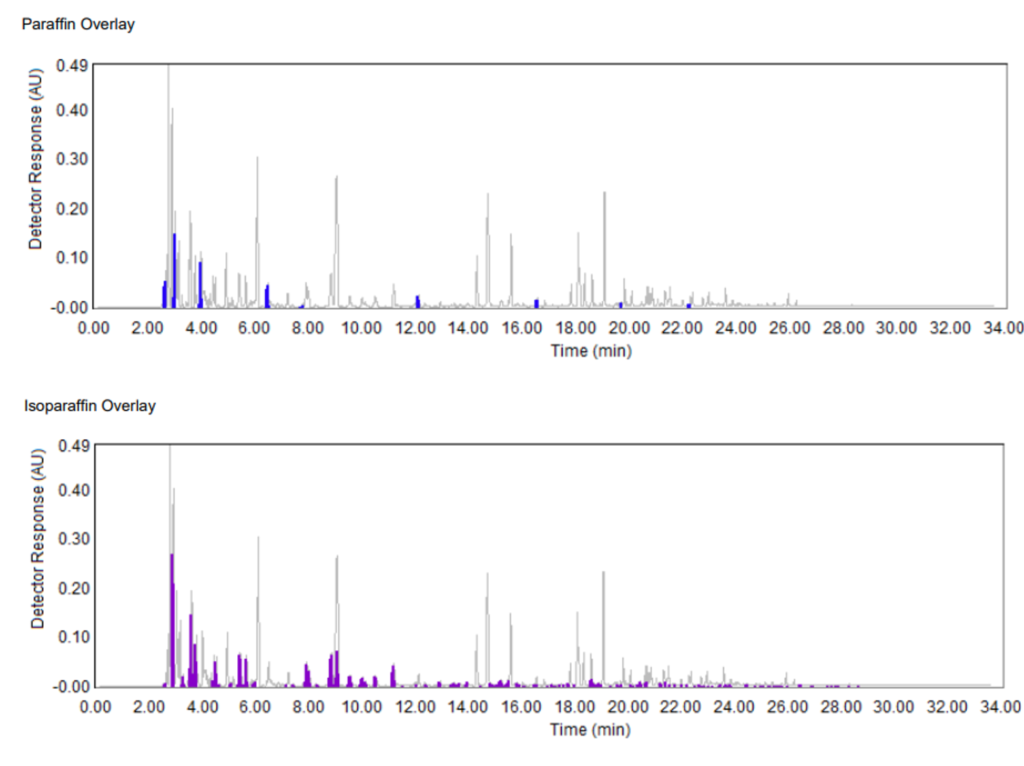
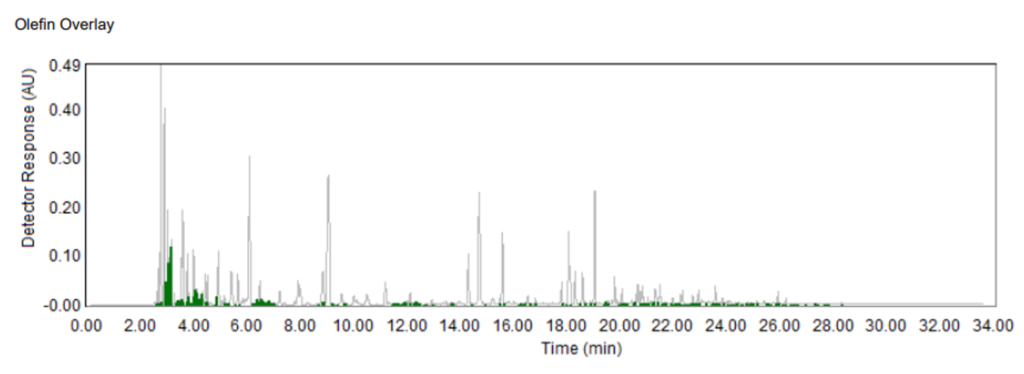
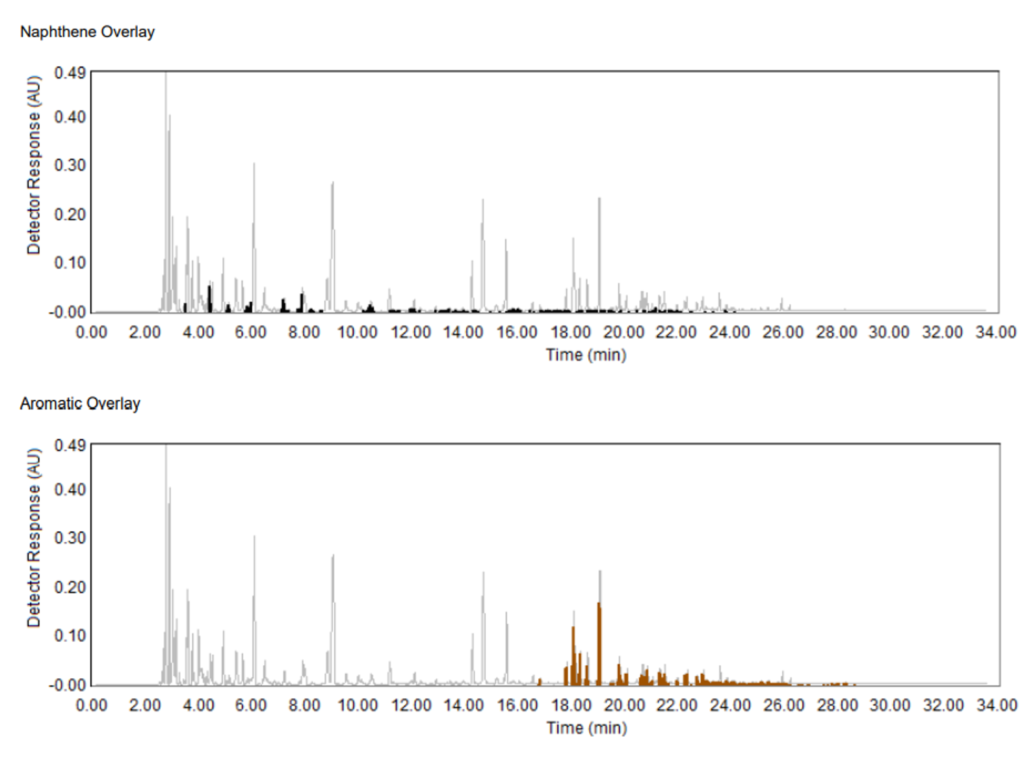
Figure 4. VUV-CS chromatogram with color-labeled peaks corresponding to each PIONA category.

Figure 5. Sample VUV-CS test report. These pass/fail criteria were developed using the results of the ASTM D8071 ILS, allowing VUV Analyze to quickly and automatically check VUV-CS samples for QA/QC testing.
Systems that have passed all previous testing up to this point should pass VUV-CS, but the sample’s complexity can also unveil problems that weren’t caught by previous tests. For example, subtle problems in the baseline may not be caught by the VUV-1 baseline check. Figure 6 shows examples of VUV-CS runs from two instruments, zoomed in to the baseline. On one instrument, two out of the three VUV-CS runs failed, but all three passed on the other instruments. Can you guess which is which?
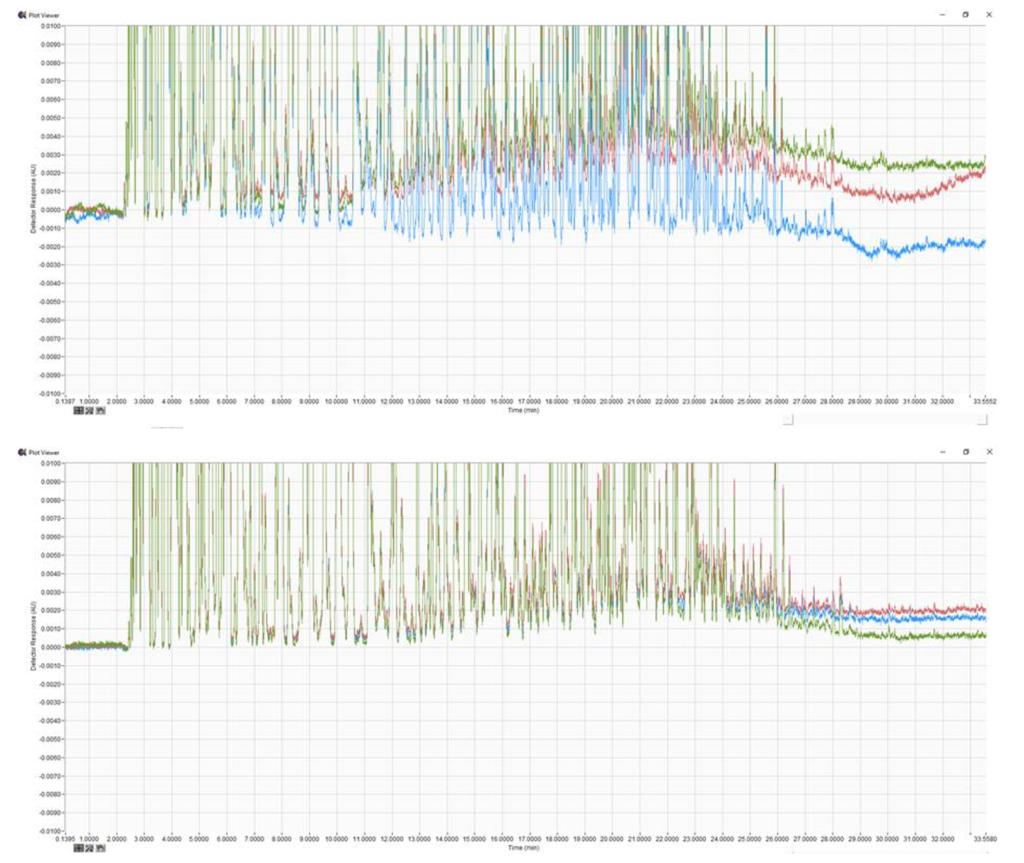
Figure 6. Three VUV-CS runs from two instruments. One instrument (top) failed two of the three runs using the automatic VUV-CS check. The other (bottom) passed all three. Even though the first instrument’s baseline drift fell within the VUV-1 baseline check limits, the failures revealed inconsistencies in the spectral data.
Both instruments’ passed the VUV-1 baseline check, as the overall baseline drift fell within the passing limits. However, the first instrument’s baselines are clearly inconsistent run-to-run. Additionally, a number of false hits were yielded from the spectral background, triggering the failures for the VUV-CS test. Thanks to the use of real, complex samples in testing, subtle problems can be identified and addressed. Passing VUV-CS demonstrates that the detector is ready to handle real sample analysis, not just controlled standards. We want to make sure our detectors are ready-to-go when they arrive at your lab.
Have any questions about the manufacturing or instrument testing process? How does this compare to your on-site QA/QC testing? Leave us a comment and reach out, we’d love to hear from you!



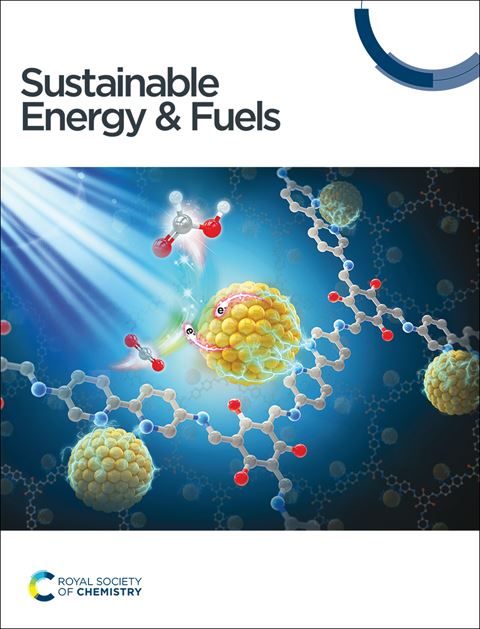
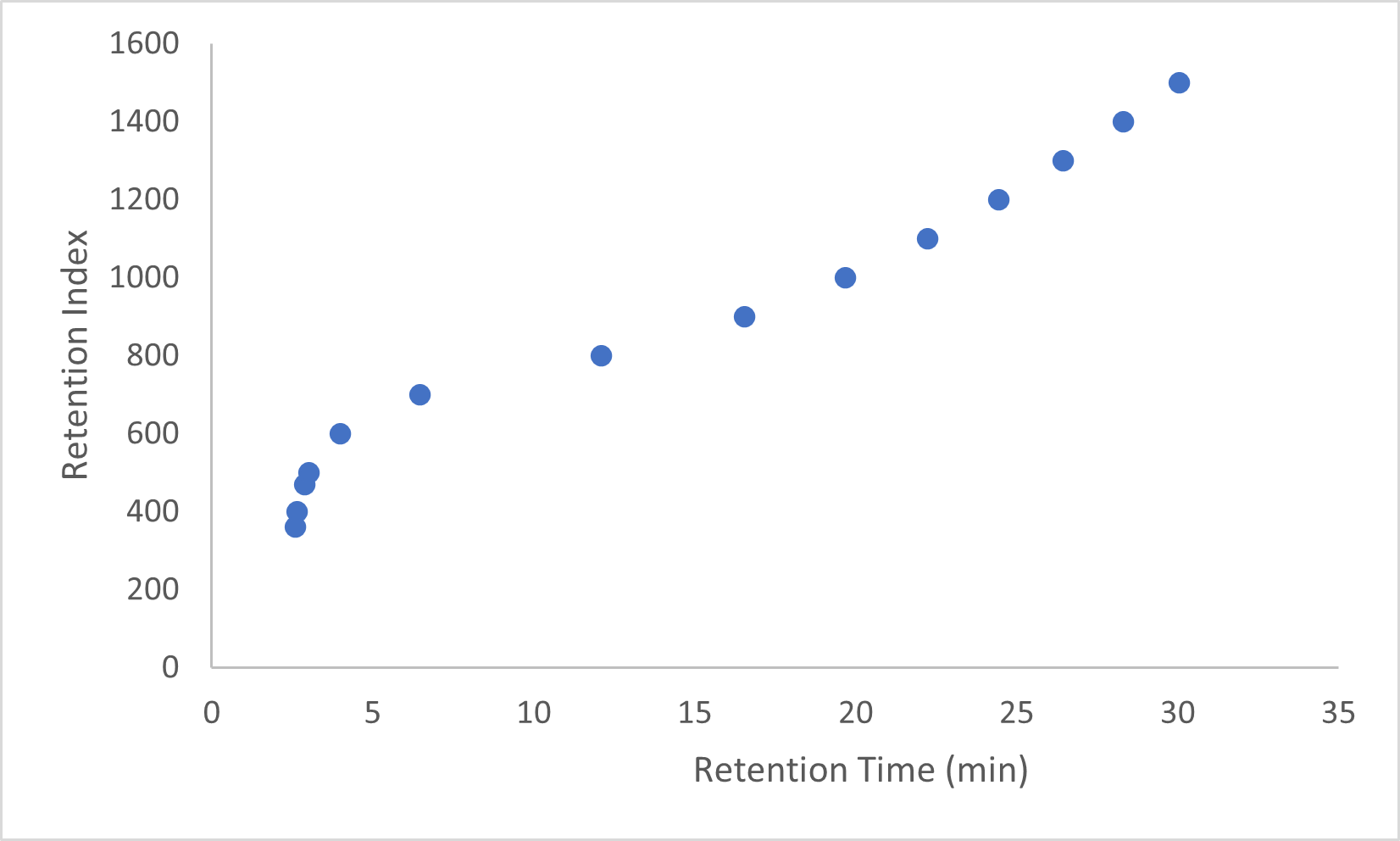





Leave a Reply